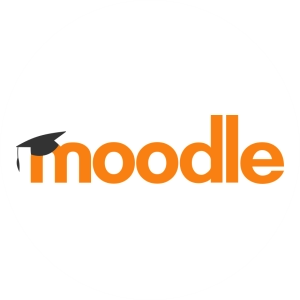
-
Moodle – Detailed Explanation
Moodle (Modular Object-Oriented Dynamic Learning Environment) is a free, open-source Learning Management System (LMS) used for creating online courses, managing learning activities, and delivering education in a structured manner.
1- On which platform are the tools used?
✅ Supported Platforms:
- Web-Based Platform: Accessible through web browsers (Chrome, Firefox, Safari, Edge, etc.)
- Mobile Applications:
- Android: Available on Google Play Store.
- iOS: Available on Apple App Store.
- Desktop: Can be accessed through any operating system with a web browser (Windows, macOS, Linux).
💡 Moodle is most commonly accessed via browsers and mobile apps.
2- What hardware requirements are needed?
🔹 Minimum & Recommended System Requirements:
Component
Minimum Requirements
Recommended Requirements
Server Processor
Dual-core processor
Quad-core or higher
RAM
4 GB
8 GB or higher
Disk Space
5 GB (basic installation)
20 GB or more for large sites
Operating System
Windows, Linux, Unix, macOS
Linux (Ubuntu, Debian) preferred
Web Server
Apache, Nginx, IIS
Apache or Nginx
Database
MySQL, PostgreSQL, MariaDB
MySQL or PostgreSQL
PHP
Version 7.4 or higher
Version 8.0 or higher
Client Device
Any device with internet access
Modern browser and up-to-date device
💡 Higher specifications are recommended for large user bases or heavy course content.
3- Installation and membership stages
🔹 Installation Steps:
- Download Moodle:
- From the official website: Moodle Download
- Set Up Web Server:
- Install Apache/Nginx and PHP.
- Database Configuration:
- Install and configure MySQL/PostgreSQL.
- Upload Files to Server:
- Place Moodle files in your server’s web directory.
- Install Moodle:
- Access through a browser (e.g., http://localhost/moodle/).
- Configure Site:
- Create admin account, define site name, and configure settings.
🔹 Membership & Account Setup:
✅ Administrator Account:
- Created during installation for managing the site.
✅ User Accounts:
- Created by the admin or through self-registration if enabled.
✅ Course Creation:
- Admins or authorized users can create and manage courses.
💡 Moodle Cloud provides a cloud-based installation without server setup requirements.
4- What can it be used for?
Moodle is primarily used for e-learning, training, and blended learning environments.
🔹 Primary Uses:
✅ Course Creation and Management:
- Designing complete online courses with various activities and resources.
✅ Assessment and Evaluation:
- Quizzes, assignments, forums, and surveys for assessment.
✅ Collaborative Learning:
- Discussion forums, wikis, glossaries, and chat modules.
✅ Tracking Progress:
- Built-in analytics and reporting tools.
✅ Integration with External Tools:
- SCORM packages, external apps, and plugins.
💡 Moodle is highly flexible and customizable for various educational contexts.
5- What is its prominent feature compared to other tools?
✅ Unique Features of Moodle:
- Open-Source Flexibility: Complete access to code for customization.
- Scalability: Suitable for small classes and large institutions.
- Plugin Ecosystem: Over 1,600 plugins for enhanced functionality.
- Mobile Learning: Native apps for learning on the go.
- Accessibility: Adheres to web accessibility standards.
- Data Privacy: Data remains on the institution’s server if self-hosted.
- Gamification: Badges, progress tracking, and competencies.
💡 Moodle stands out for its open-source nature, customization possibilities, and community support.
6- Sample application made with pictures
Example 1: Online Course Creation
- Objective: Creating a course for ‘Introduction to Programming’.
- Features Used: Course modules, quizzes, discussion forums, and resource uploads.
- Result: A well-organized, interactive course with automated grading.
Example 2: Student Progress Tracking
- Objective: Monitoring students’ performance in a Mathematics course.
- Features Used: Gradebook, analytics, and reports.
- Result: Effective tracking of learners’ achievements.
7- Which courses can it be used in and is compatible with?
Moodle is versatile and applicable to various vocational and academic disciplines.
🔹 Relevant Courses:
- Computer Science: Programming, data analysis, computer networking.
- Engineering: CAD software tutorials, electronics, and simulations.
- Technical Drawing: Tutorials, assessments, and practical applications.
- Healthcare: Online medical training modules.
- Mathematics & Science: Interactive quizzes and problem-solving activities.
- Language Learning: Lessons, quizzes, and collaborative exercises.
- Professional Development: Corporate training and certifications.
💡 Moodle’s compatibility with various plugins allows integration with third-party tools and systems.
8- Is it free?
✅ Yes, Moodle is free and open-source.
🔹 Free vs Paid Versions:
Feature
Free (Self-Hosted)
Paid (MoodleCloud)
Installation
Self-setup required
Cloud-based, ready to use
Customization
Full access
Limited customization
Storage
Unlimited (Depends on server)
Limited (up to 5GB)
Cost
Free
Starts from €110/year
Support
Community support
Premium support available
💡 MoodleCloud is a paid option for those who prefer hassle-free hosting.
9- Links related to Moodle
🔗 Official Website: Moodle.org
🔗 Download Moodle (Self-Hosted): Moodle Download
🔗 MoodleCloud (Cloud-Based Option): MoodleCloud
🔗 Documentation: Moodle Docs
🔗 Plugins Directory: Moodle Plugins
🔗 Community Forums: Moodle Community🔹 Conclusion
Moodle is a robust, versatile, and powerful Learning Management System perfect for educational institutions, corporate training, and individual instructors.
🚀 Why use Moodle?
✔ Fully customizable and open-source.
✔ Scalable to accommodate both small and large organizations.
✔ Wide range of plugins for added functionality.
✔ Strong community support.
✔ Cross-platform accessibility.